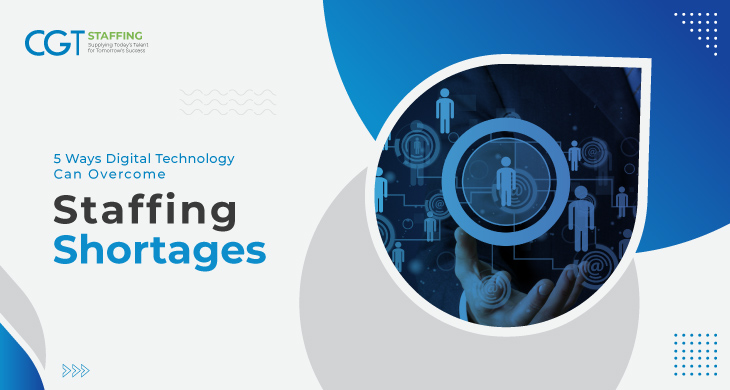With more and more professionals partaking of remote work, especially since the pandemic, companies are facing an increase in employee turnover. Even the best talent acquisition strategies have fallen short amid periods of unprecedented change. As per the U.S. Chamber of Commerce, there are 11.3 million unfilled jobs in the US, whereas the number of unemployed workers is estimated at just six million.
While staffing still remains a principal challenge for many organizations, it has also ushered in other unforeseen challenges, not the least of which is reduced workforce productivity. Irrespective of the multiple reasons for such challenges, modern technologies combat such shortages in manifold ways.
Table of Contents
Automating Processes
By eliminating banal tasks and redundancies, streamlining workflows, and encouraging digital automation, organizations are empowered to increase productivity with limited resources. Moreover, incorporating process automation curtails the unnecessary workload assigned to current staff, thereby reducing the risk of stress, low morale, and burnout that leads to heavy turnover. While such automation necessitates an up-front investment, the subsequent return is worthwhile, reducing unnecessary requirement of full-time labor and significantly boosting productivity.
Incorporating Recruitment Apps
Staffing shortages can also be addressed by investing in mobile recruitment apps. These modern apps aid organizations in efficiently onboarding new employees, storing candidate data, and enabling current employees to share referrals with potential candidates. On the whole, such programs eliminate the centralized vs. decentralized recruitment debate, especially for startups.
With all recruiting and candidate data housed within a centralized database, businesses can reap major benefits. This is much more convenient than having data spread throughout various programs and repositories, such as online job boards or spreadsheets. With that in mind, however, the EEOC (Equal Employment Opportunity Commission) cautions firms against using algorithms, artificial intelligence, and software to evaluate job applications without some level of final human oversight. To ensure that job applicants are evaluated fairly, employers must implement a balance of automation and oversight.
Digitizing KPI Strategies
The ability to monitor and address key performance indicators in real time can open up a world of possibilities for improving processes and enhancing efficiency. Incorporating a digital system for KPI management can highlight key metrics for material flow, absenteeism, and even cycle times as a means of monitoring tasks. This promotes learning and development at both an individual and a company level.
A digitized strategy for KPIs aids an organization in its analysis by establishing baselines, identifying goals, and tracking performance. Identifying the root causes of process inefficiencies, which could occur sooner (or later) than you initially anticipated, is immensely helpful. Thanks to the creation of a “digital thread” of information, one can pinpoint critical problems and their potential resolutions, modeling remedies before committing to their long-term application.
Incorporating RPA
Financial services, manufacturing, healthcare, logistics, insurance, and utilities are just a few of the sectors where Robotic Process Automation is making a difference. It has been reported that RPA can be used for 60% of industrial jobs, 43% of banks, financial sectors, and insurers processes, and 36% of social service and healthcare tasks.
Digitizing Training and Onboarding
When talent is in short supply, it’s critical to move as swiftly as possible to onboard and train or refine the employees that you do have. To maximize the resources in place, start by evaluating your employees and their skill sets. Create a personnel database of the people who can perform certain tasks or fill particular roles by conducting a talent inventory; then, compare this to your present training plans to identify gaps, formulate plans of action, or cross-train current employees.
Digital training programs for personnel empower them to access learning at any time and from any location. They can use digital learning solutions and study at their convenience. Such solutions might also employ video analytics in order to promote multi-sensory learning. Even big and successful companies can benefit from incorporating modern technology in streamlining their processes.
Conclusion
Although deploying new technology won’t end the problem of widespread labor shortages, it’s a step in the right direction for companies struggling with staffing shortages. Seeking external staffing services like those offered by some of the best staffing agencies in Pittsburgh, or for that matter, anywhere, may also ease some of the burden imposed by persistent labor shortages.
